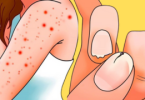Results: This review included four studies: one RCT, two quasi-randomized studies and one quasi-experimental study. In one RCT, after the first application of cabbage leaves, fewer mothers experienced breast enlargement in the second to fourth period than in the control group. At the second assessment, a lower percentage of the intervention group felt their breasts were full (51% vs. 57%, p = 0.68). In one study, the experimental group receiving cabbage leaf treatment improved their pretreatment score from 5.17 (70%) to 3.02 (20%) (p =<0.001). In addition, hot and cold compresses reduced the efficacy score more than cold cabbage leaves (p<0.001). In one study, using cabbage leaves and both hot and cold compresses reduced numerical pain scores (p≤0.001) and reduced breast engorgement pain. The results of the study showed a statistically significant reduction in pain scores for both room temperature by 2.0 points (37%) and chilled cabbage leaves by 2.1 points (38%) (p=0.0001). There was no statistical difference between mean scores before and after room temperature and chilled cabbage leaf treatment (p=0.84). In one study, pre- and post-treatment scores using the Bourbonnais scale showed a statistically significant reduction in pain scores: 1.8 points (30). %) with cabbage leaves and 2.2 points (39%) with gel packs (p=0.0001). One study found that mothers treated with cabbage leaves were 18% more breastfed at 6 weeks of age (p= 0.09). Fewer mothers stopped breastfeeding before 8 days (8.88% vs. 24% p= 0.09), and the total duration of breastfeeding was longer in the intervention group (36 vs. 30 days, p=0.04).







Leave a Comment